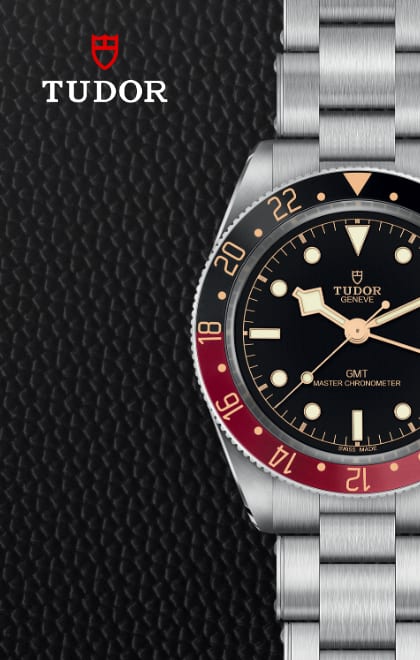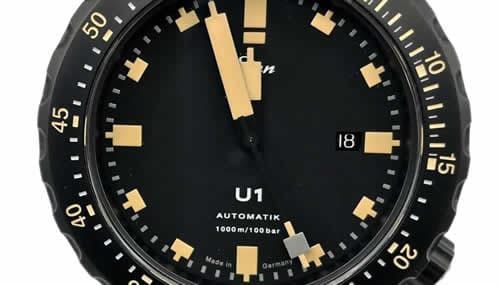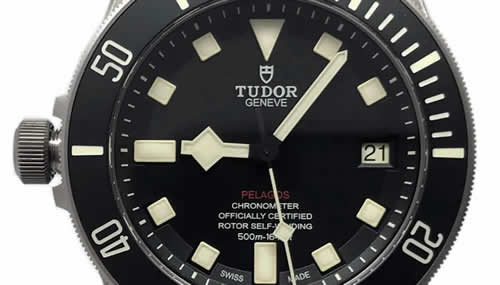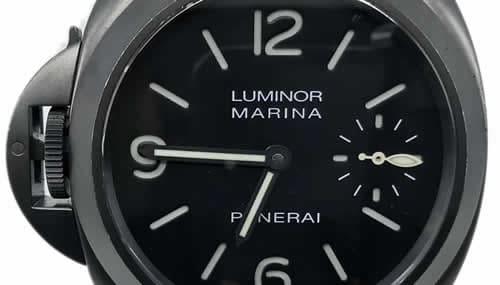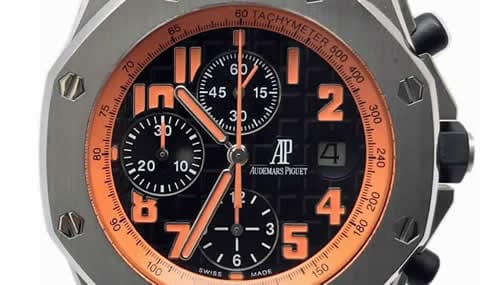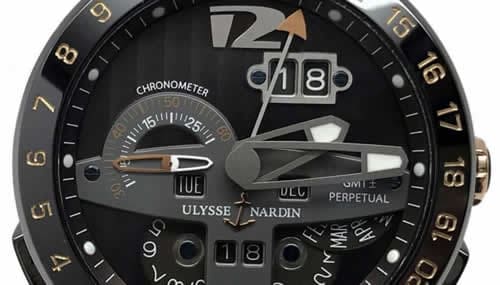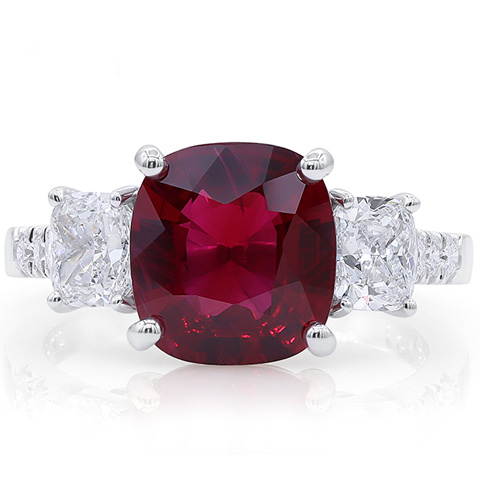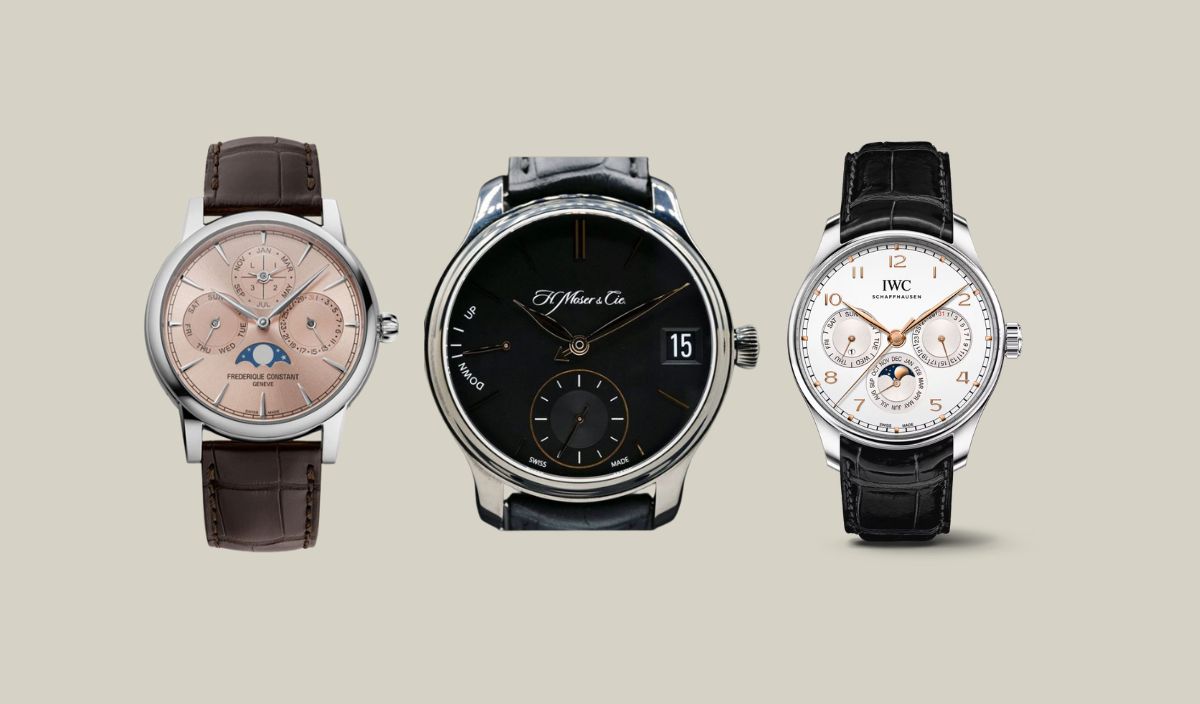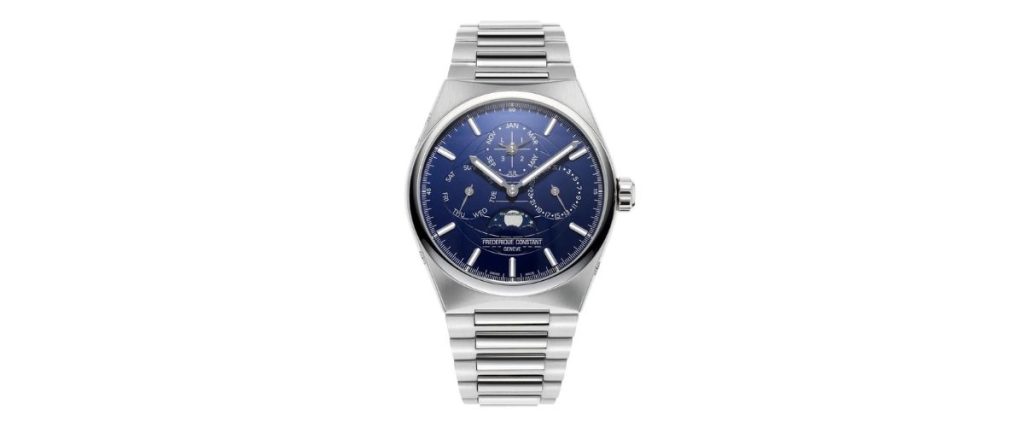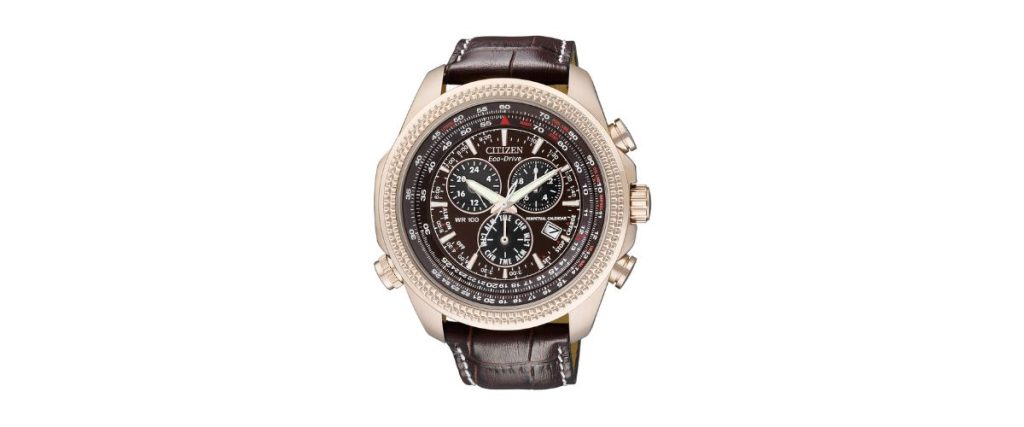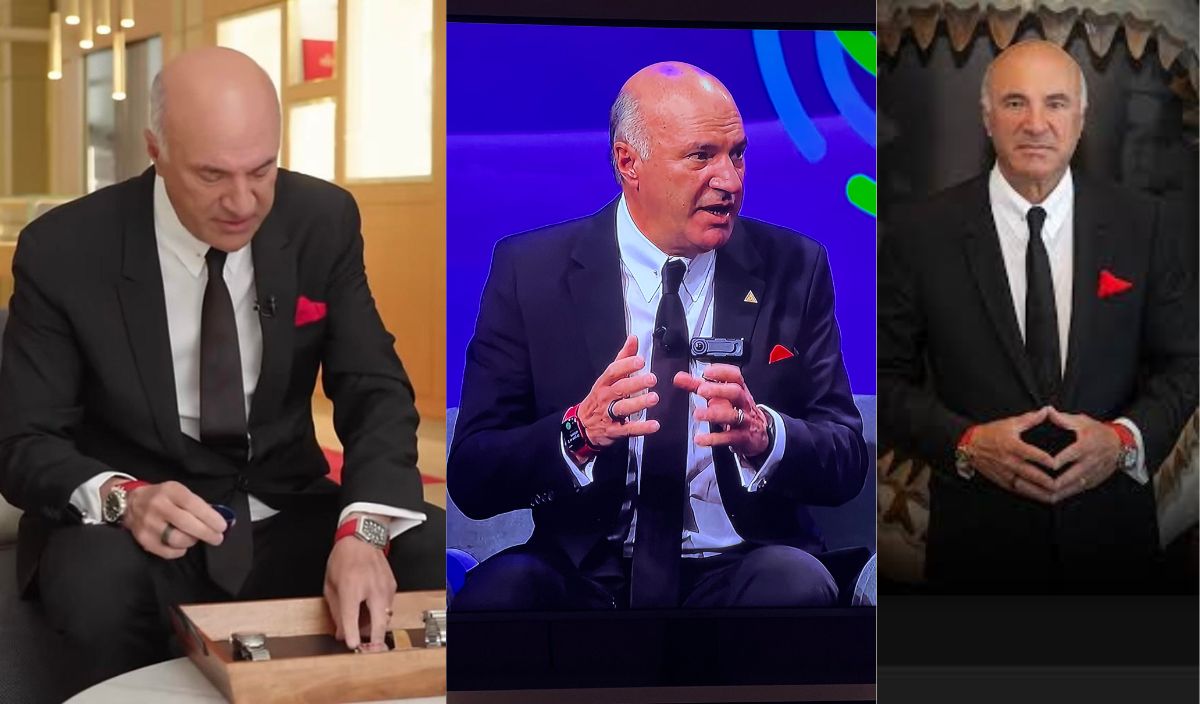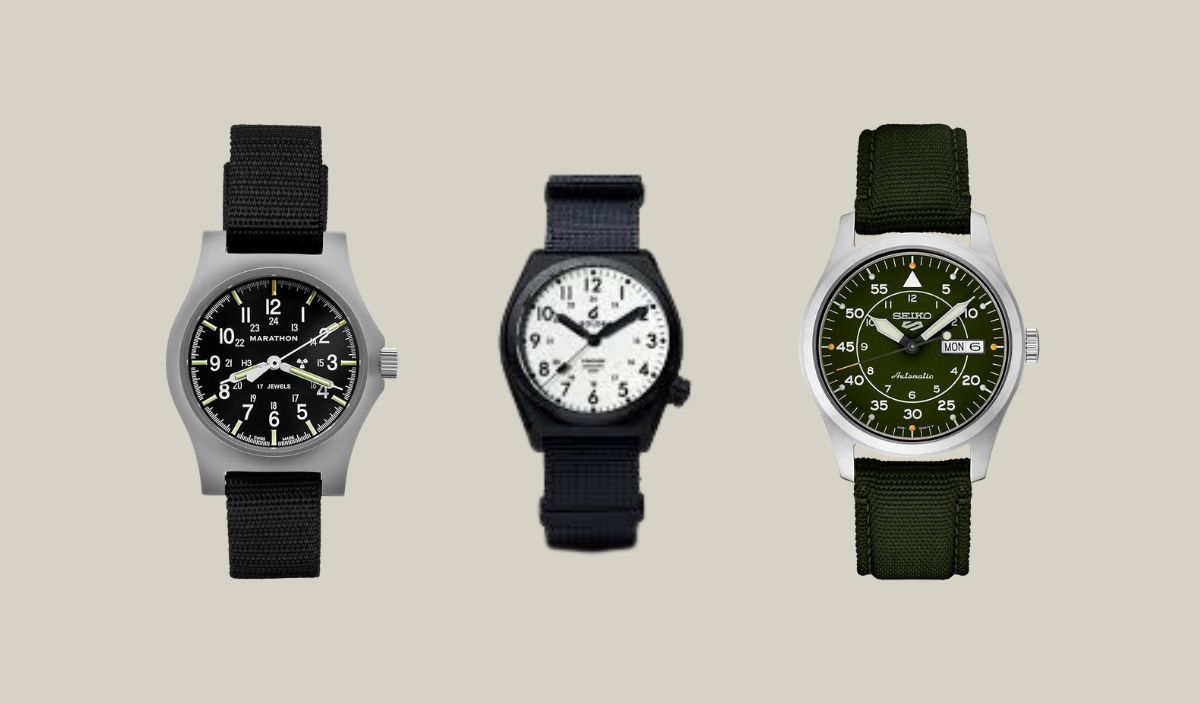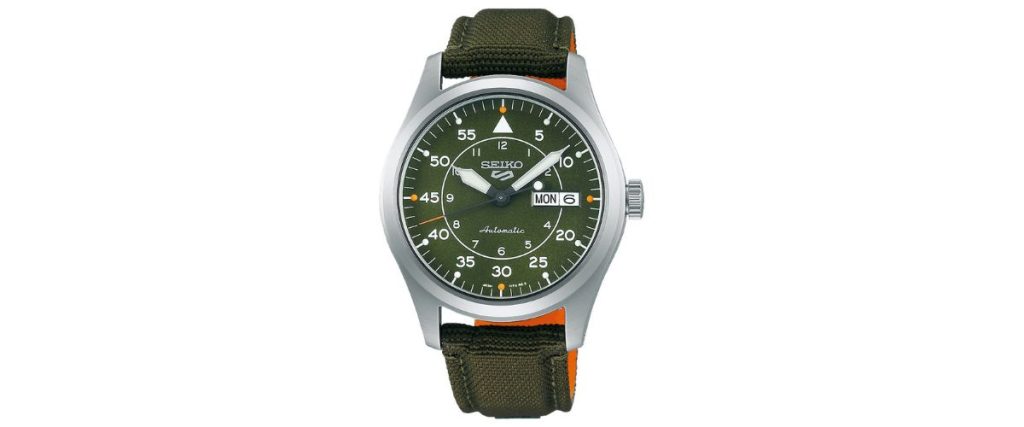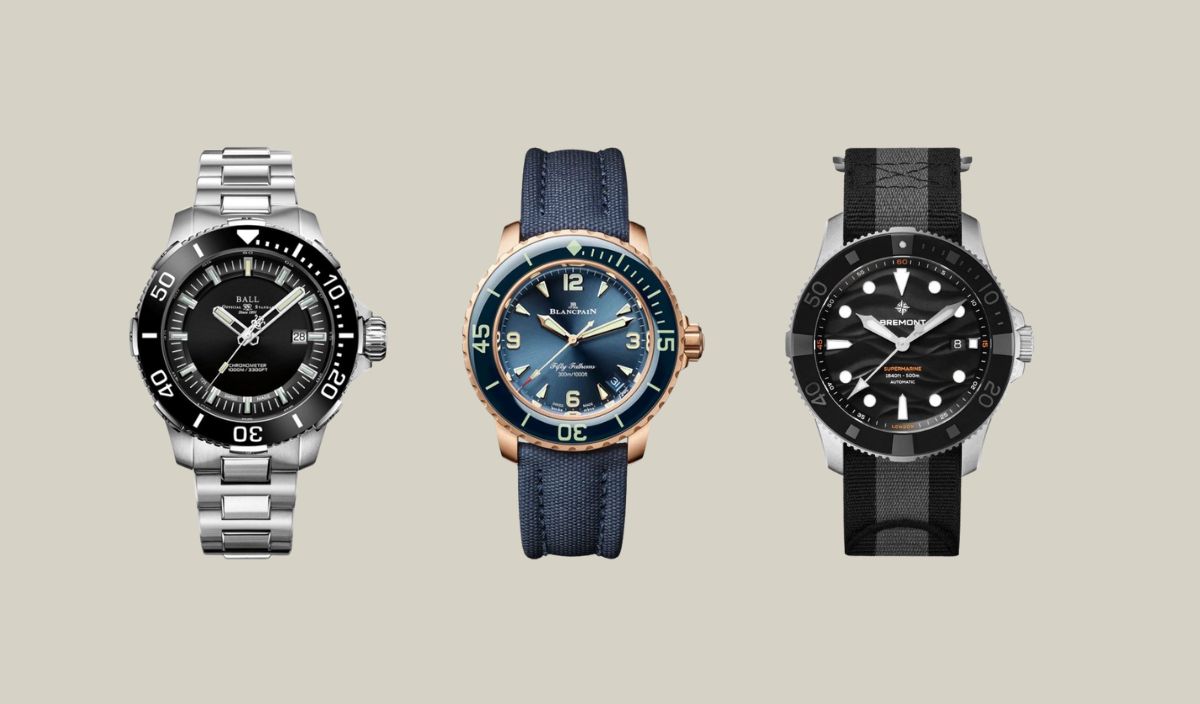
In a world where we are becoming increasingly tethered to digital tools, computers, and smartwatches, there exists a breed of watch that still applies itself to the crushing, unforgiving depths of the ocean, though we may not need to rely on it so much today.
It’s the automatic dive watch. Indeed, there is still a market for what was once an indispensable tool – a lifeline, even. Today, it serves as a testament to the evolution of watchmaking.
Modern-day dive tools trace their roots back to a rich heritage, steeped in world firsts, innovative materials, and cutting-edge technology.
With just as much draw as they once had, luxury dive watches are still worn for their practical robustness, their versatility, and their unmistakable style. This guide looks at the best automatic dive watches currently on the market and touches on the importance of the dive watch, even in today’s world.
The Appeal of the Dive Watch
It’s a known fact that dive watches are inherently over-engineered. Even for those who barely take their watches near a drop of water, they instill a sense of immortality.
Dive watches have a solid construction that allows them to survive impact, pressure, and the general knocks and bumps you would expect to encounter when on the deck of a boat or whilst exploring the ocean bed.
What’s more, their water resistance surpasses the underwater depths that most humans would ever need or want to venture down to.
Their impressive shock resistance means they can withstand the endeavours of the most daring and adventurous spirits, while a clear dial format with large luminescent details ensures continual, uncompromised legibility.
Simply put, it’s the underwater tool watch that you’ll probably never need to use underwater, but it’s good to know you could if you wanted to.
Some of the industry’s most iconic watches are dive watches. Their chunky unidirectional rotating bezels and prominent, luminous hour markers and hands create a rugged, stylish look that can seamlessly transition from casual wear to something more formal if needed.
And though there was once an unwritten rule condemning the use of a dive watch with a suit, it has been done and continues to be done.
Even if you have no aspirations to wear your watch to the swimming pool on vacation, let alone the ocean, it’s often the knowing that you don’t have to wrap your watch in cotton wool that makes it so appealing.
Dive watches look daring even in the most mundane of settings, oozing masculinity and character, and cementing strong pop culture status to the wrist (Think 007, Jaws, and The Meg).
And supposing you don’t even need a tough and durable daily tool for leisurely pursuits or your line of work? That’s ok. Many collectors just love the look and enjoy the heft of a dive watch on the wrist.
These tools have the ability to directly connect the wearer with a rich history of deep-sea exploration and horological innovation through the ages, which is one reason why models with a retro flair prove incredibly popular today. Let’s take a look at some of our favourite picks here at Exquisite Timepieces.
Ball Engineer Hydrocarbon DeepQUEST

Dial luminosity is arguably one of the most impressive qualities of a Ball watch. The company has specialised in perfecting its tritium-filled light tubes for years. Of all the modern-day Super-LumiNova-treated dials out there, the continual glow of Ball’s micro gas tubes reigns supreme.
These tubes glow during the daytime, even when you can’t see them. Fitted tubes on the hands and the hour markers of this Ball Engineer Hydrocarbon DeepQUEST watch will guide the way through the murkiest of waters in colours of orange and green.
The watch measures 42mm in diameter and has been crafted from titanium for a comfortable and lightweight feel against the wrist. Master designers at Ball equip this watch with a staggering 1000-meter water resistance, which is upheld by the expertly engineered screw-down crown at 3 o’clock.
Ball Engineer Hydrocarbon watches are built like tanks, and this DeepQUEST iteration is no exception. In addition to its smooth and glossy black ceramic unidirectional rotating bezel, this dive watch features several patented innovations, including a SpringLOCK Anti-Shock System to reduce the impact on the balance spring inside the automatic movement, and the brand’s SpringSEAL Regulator Protection, which prevents important components from shifting position during heavy impact.
Blancpain Fifty Fathoms Automatic 38mm
The Fifty Fathoms watch by Blancpain is highly regarded in the watch world. It’s a truly exceptional timepiece in its own right, carrying historical significance, as well as being considered the archetype of the modern dive watch.
What’s even more impressive about this Fifty Fathoms watch is its slimness, which sets it apart from so much of its competition. So many modern automatic dive watches sit on the wrist like a bulky slab of metal.
Still, Blancpain has carefully considered this design, offering it in an appealing 38mm diameter for those with smaller wrists.
This Blancpain Fifty Fathoms watch is powered by the in-house automatic Calibre 1150, which features a silicone balance spring and a 100-hour power reserve once fully wound.
It may or may not be a watch you want to wear every single day, but the combination of its 300M water-resistant red gold case and its classic blue sailcloth strap, not to mention its luxurious 18k rose gold case, makes it an interesting proposition that sits somewhere between sporty and dressy.
Blancpain prioritises legibility across the dial, featuring shard-like hour markers, luminous central hour and minute hands, and a red-tipped central sweeping seconds hand, all set against a bed of sunray blue.
Bremont Supermarine 500m on Nato Strap

This automatic dive watch from Bremont belongs to the British manufacturer’s Supermarine watch collection and impresses with its 500-meter water-resistant case crafted from 904L stainless steel.
Fit for the water or for wearing on dry land, the broad 43mm model creates huge wrist presence with its black dial finished in a striking wave effect, complemented by a sporty NATO strap.
It’s a perfect example to demonstrate how the dive watch can be a versatile tool. While material straps are not as quick-drying or as practical for diving as rubber bands, they do give a dive watch a nice field watch style, should you intend to wear it out of the water.
The Bremont Supermarine 500M can reach extraordinary depths whilst keeping the internal environment water-tight.
Its 500-meter water resistance is paired with a screw-down crown, brushed lugs, and a strong scratch-resistant sapphire crystal glass that shields the luminous-filled hands and hour markers from any undesirable glare when exposed to natural or artificial light.
Lastly, you’ll note the wayfinder logo, which now sits at 12 o’clock on the dial as Bremont’s new emblem. It sits amongst flashes of orange detail seen in the Supermarine lettering and in the five-minute increments of the minute track on the flange.
DOXA Sub 300T Clive Cussler

Not many dive watches are as closely associated with pop culture as DOXA. Its watches have appeared on the silver screen and on the wrists of ocean conservationist Jacques Cousteau throughout the 60s and 70s.
This iteration, however, is named the Clive Cluster and pays homage to the novelist and the adventurous character he writes about, Dirk Pitt.
Inspired by shipwreck voyages, the Sub 300T has an aged and weathered appearance to its stainless steel case, evoking a vintage compass and showcasing the fearless spirit of adventure.
The bracelet, clasp, and case of the DOXA Sub 300T Clive Cluster watch all feature a worn look that coincides beautifully with a vintage-coloured dial, achieved through a handmade decorative grinding process.
Capturing a strong vintage look, masters at DOXA choose a beads-of-rice bracelet, which can be swapped for a NATO strap if desired.
On the caseback of this special dive watch are the names and historical artefacts discovered by NUMA, while the unidirectional rotating bezel allows for effortless measuring of elapsed time marked by depth in feet.
Aside from a helium escape valve to complete its look, this 300M water-resistant dive watch is powered by a relentless workhorse – a Swiss-made automatic movement with a 38-hour power reserve.
Longines Hydroconquest GMT

For watch enthusiasts who appreciate the mechanical complexity of a solidly engineered movement at the heart of a watch, automatic dive watches are often considered to be “wristwatches with a soul”. The same is true for the diving kind, such as this automatic dive watch – the Longines HydroConquest GMT.
As you’ll already have figured from its name, it’s not just a watch for diving but also a companion for clocking up the air miles and hopping time zones.
The Longines HydroConquest GMT draws inspiration from the world of water sports and features a 300-meter water-resistant stainless steel case, topped with a strong anti-reflective sapphire crystal front.
The automatic Calibre L844, housed within its 41mm case, is capable of producing a power reserve of 72 hours when removed from the wrist. It’s a great option if you like to rotate your collection regularly, and even features a silicone hairspring that’s resistant to the damaging effects of magnetism.
The star of the show, however, is the indulgent chocolate-caramel dial in a sunray finish. Similar to the hue of a vintage-inspired bronze dive watch, the tones of the dial and the matching colored ceramic bezel are perfect for getting noticed on the wrist, and even feature beige-colored markers and hands for added retro charm.
Mühle Glashütte Seebataillon GMT
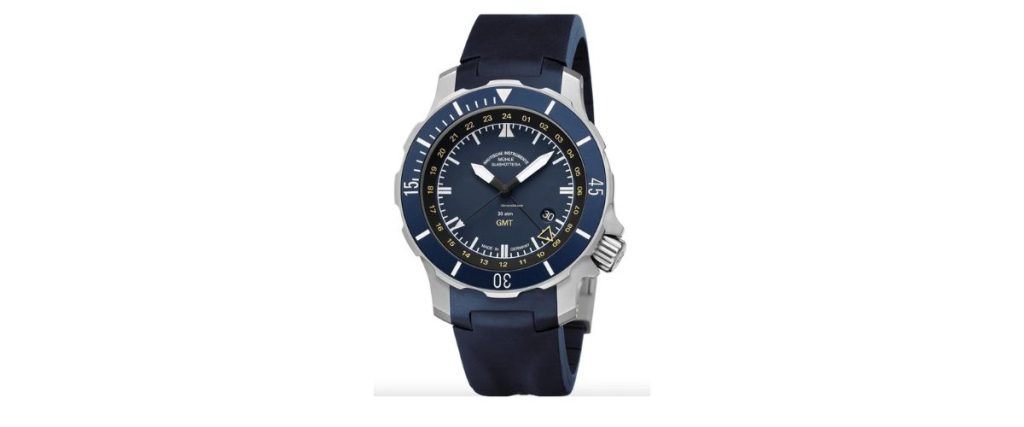
Just a subtle swing of the wrist will power the rotor and wind the mainspring of this stylish dive watch from Muhle Glashutte.
Perhaps this isn’t a brand that would naturally spring to mind when you think of an automatic dive watch, but this German brand certainly knows how to catch the attention of the German Navy’s Seebataillon.
Watches from the brand’s S.A.R. series mean business and have been developed especially for soldiers of this specialised unit.
It’s also a GMT complication, allowing you to track an additional time zone via the black 24-hour scale around the flange and a light, golden-colored arrow-tipped GMT hand.
A matte black dial features matte black coated hands treated with a generous layer of Super-LumiNova material, allowing you to track the time even when submerged under 300 meters of water.
This is a confident 45mm model crafted from lightweight titanium, housing a reliable Sellita-based movement that offers a 56-hour power reserve.
The movement even benefits from Muhle Glashutte’s special in-house Woodpecker neck regulation mechanism, promising improved mechanical efficiency, along with a stop-second feature and date correction mechanism.
Nivada Grenchen Aquamar Blue

Automatic dive watches can last for generations, and that was certainly the vision behind the Aquamar Blue by Nivada Grenchen.
In contrast to a quartz watch, the automatic movement within this dive watch is built to withstand the test of time and endure extreme underwater conditions, thanks to its solidly constructed 38mm stainless steel case.
It may be a lesser-known charismatic dive watch in the grand scheme of things, but this watch compromises on nothing in terms of quality and reliability.
The watch features a sandwich dial with luminous treatment underneath the surface, protruding through from the lower level.
The off-white colour of the faux patina lume adds even more vintage character to this 200-meter water-resistant case, as does the beads-of-rice bracelet.
On the back of the case is an engraved depiction of the Antarctic penguin, which personifies the watchmaker’s pursuit of exploration. To finish, Vivada Grenchen equips this watch with a domed sapphire crystal glass front and screw-down crown.
The real hidden surprise of the Aquamar dive watch, however, is the innovative bi-color calendar disc, which transitions from LumiNova white to faux-patina beige, much like a game of roulette.
Omega Seamaster Planet Ocean 600M Worldtimer
Even if you never dive with the Omega Seamaster Planet Ocean 600M Worldtimer, you’ll still want to wear it daily. Its black and turquoise dial, featuring world cities and the date on a globe decoration, contributes to what can only be described as an entirely unique take on the dive watch.
It’s good for the gym, drinks out with friends in the evening, or a deep, daring dive, thanks to a water resistance of 600 meters. But most of all, its slick black ceramic case imparts a resolutely modern look on the wrist.
This Omega Seamaster boasts a playful mix of honeycomb textures and smooth, vibrant surfaces, all punctuated by Omega’s distinctive arrow-tipped hands.
The 45.5mm model features a laser-ablated diving scale and a Grade 5 titanium globe dial centre, along with day and night sections, and diamond-brushed indexes.
Comfort, of course, is paramount. Omega equips this watch with an integrated black structured rubber band and outfits it with one of its state-of-the-art Co-Axial escapement movements, guaranteeing chronometer-certified accuracy 24/7.
The self-winding Calibre 8938 is resistant to magnetic fields reaching 15,000 gauss, and provides a 60-hour power reserve, ensuring you’re covered for every eventuality.
Oris Diver Sixty-Five
Oris is cherished by an elite community of dive watch enthusiasts, particularly those with a fondness for the Divers Sixty-Five watch collection, which draws direct inspiration from the brand’s earlier dive watches of the 1960s.
The collection first launched in 2016, wowing devoted dive watch collectors with its bubble, domed sapphire that mimicked the distortion effect that many vintage dive watches featured with their acrylic lenses.
This Divers Sixty-Five watch imparts complete, unadulterated vintage charm in the form of a multi-piece stainless steel case that aligns with yesteryear’s proportions, measuring 40mm in diameter.
The minute scale on the top ring also facilitates easy handling of the unidirectional rotating bezel. This is a watch that you’ll want to wear with a bomber jacket, casual weekend attire, and something smarter during the evening.
The splash of turquoise is what brings this Oris dive watch to life. It appears in the shield, circular and rectangular hour markers, injecting the watch with a subtle splash of color without being overbearing or detracting from the retro characteristics that feature elsewhere.
Although Oris has returned to manufacturing some of its own movements for select dive watches, this one is powered by a third-party Swiss movement, which isn’t necessarily a bad thing, since ETA movements, and those like them, constitute cheaper and easier repairs and service work.
Seiko Prospex Diver’s Modern Re-Interpretation GMT
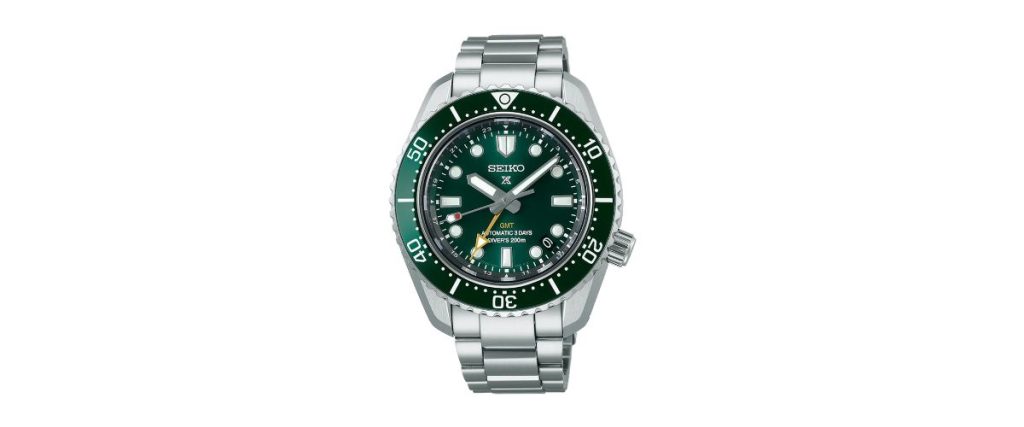
No one does a better value-for-money automatic dive watch than Japanese watch manufacturer Seiko. The Prospex collection is bursting with an endless range of diver-ready styles, each one imbued with tool watch credentials for everyday wear.
This is another GMT dive watch, though if you don’t want to use the complication, it’s no big deal. The time zone tracking function is the runner-up feature in this watch. First and foremost, it’s a rugged dive tool with an athletic, chiselled stainless steel case (42mm) and a water resistance of 200 meters.
This Seiko Prospex watch is a re-interpretation of the brand’s earlier 1968 model – the brand’s first dive watch.
It features a dramatic green dial with a matching green unidirectional rotating bezel that only rotates counter-clockwise, thereby eliminating the risk of accidentally extending dive time while underwater.
It features luminous, chunky hour markers and hands, along with a golden yellow GMT hand that allows you to track an additional time zone via a discreet 24-hour track around the flange.
Additional features include its rugged three-link stainless steel bracelet, which provides comfort against the wrist thanks to a Seiko-engraved three-fold clasp and a push-button release mechanism with an extending feature.
TUDOR Pelagos Ultra

Last but not least is the TUDOR Pelagos. In a world of fragile, temperamental electronics, nothing beats the robustness and longevity of a tough automatic dive watch like this.
Firstly, take note of its staggering 1000-meter water resistance – by far one of its most impressive features. Secondly, the dial of the TUDOR Pelagos is tailored for complete legibility.
It features a rich black display adorned with crisp, square, and rectangular hour markers, together with the iconic Snowflake hands – a signature design feature of TUDOR.
The Tudor Pelagos offers a refreshing blend of professional-grade materials and tool-oriented features that are rare in a watch within the sub-$8,000 to $10,000 price bracket.
And here’s where the fundamental differences lie between the Pelagos and the TUDOR Black Bay – another collector’s favourite. The Pelagos case is constructed from titanium and even features an extension mechanism on its equally lightweight bracelet.
This allows for the dive watch to wear like a dream. In fact, if it weren’t for the many practical uses of the watch, you’d likely forget you were wearing it.
Everything, from the ergonomically crafted links of the bracelet to the butter-smooth click of the bezel, has been engineered to a level of excellence, using its sister brand, Rolex, as a standard to match up to.
Fitted with a METAS-certified movement, the TUDOR Pelagos is ideal for professional divers, saturation divers, recreational divers, or non-divers.
To be quite frank, anyone looking for a tool watch should consider something like the Pelagos. Its use, both underwater and on land, not to mention features like its helium escape valve, makes it a perfect go-anywhere, do-anything watch with an unmistakable rugged charm.
Wrapping Up
You’ve just finished reading our lineup of the best automatic dive watches as chosen by us here at Exquisite Timepieces.
Each option in our lineup offers something a little different, whether it’s next-level water resistance, innovative gas light tubes for superior luminosity, or hidden colour-changing calendrical functions. Which will you choose?


